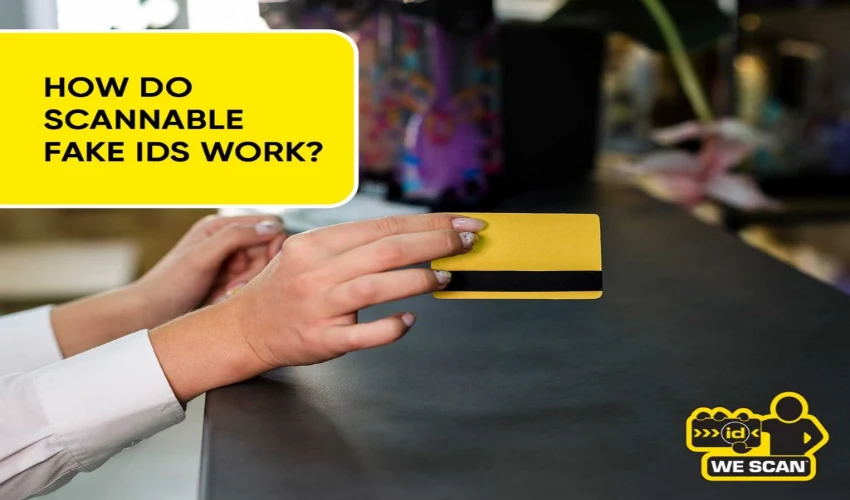
How to Create Effective Scannable IDs for Your Business
In today’s fast-paced digital world, scannable IDs have become an essential tool for modern businesses. From employee management to visitor tracking and security, a scannable ID system can greatly enhance operational efficiency. But simply having an ID badge with a barcode or QR code isn’t enough—your ID must be effective, secure, and user-friendly. In this article, we’ll explore how to create effective scannable IDs for your business and the best practices to follow.
What Are Scannable IDs?
Scannable IDs are identification cards that include a machine-readable code—typically a barcode, QR code, or NFC chip—which can be scanned by devices for instant access to digital information. They are widely used for:
- Employee access control
- Time tracking
- Inventory and asset management
- Customer loyalty programs
- Event registration and verification
Why Scannable IDs Matter
Implementing Scannable ID can streamline processes and reduce human error. With just a scan, your system can instantly:
- Identify and verify personnel
- Log entry and exit times
- Track usage of company assets
- Improve workplace security
- Speed up check-in/check-out procedures
An effective scannable ID system can help you save time, enhance security, and build a more professional brand image.
Step-by-Step Guide to Creating Effective Scannable IDs
- Define Your Purpose and Use Case
Before creating your scannable ID cards, clearly define their purpose. Are they for employee access, customer rewards, or product tracking? Understanding the goal will help determine:
- What type of code to use (QR, barcode, or NFC)
- What information needs to be encoded
- Which scanning devices or software you’ll need
- Choose the Right Scannable Technology
Different businesses require different types of scannable codes:
- QR Codes: Ideal for storing URLs, contact info, or linking to cloud-based records. Great for mobile scanning.
- Barcodes: Simple and widely used for inventory and product management.
- NFC Chips: Suitable for high-security applications, allowing contactless data transfer with a tap.
Your choice should reflect your business size, industry, and security requirements.
- Use a Reliable ID Card Design Tool
Use professional ID card design software or platforms like Canva, Adobe Illustrator, or specialized ID card software. Make sure your design includes:
- Company logo and branding
- Employee or user photo (if applicable)
- Name and role/title
- Unique ID number
- Scannable code placed in a visible and accessible location
Tip: Keep the design clean and uncluttered to enhance scannability.
- Generate and Integrate the Code Properly
Use trusted tools to generate your QR code or barcode. Ensure the information encoded is accurate, such as:
- Employee ID
- Encrypted user details
- URL for backend verification
- Product serial numbers
Test each code before printing to ensure it works across all intended scanners or devices.
- Print Using High-Quality Materials
Print your scannable ID cards using high-resolution printers and durable materials such as PVC. Poor print quality can make codes unreadable and reduce card lifespan.
Consider features like:
- Lamination to protect from wear and tear
- UV or holographic overlays for added security
- Waterproof or scratch-resistant surfaces
- Implement a Secure Backend System
A scannable ID is only as good as the database or system it connects to. Ensure your backend software or access control system:
- Is regularly updated and secure
- Logs data in real time
- Can be integrated with HR or CRM platforms
- Provides role-based access permissions
Security is vital, especially when sensitive data like employee or customer information is involved.
- Train Your Staff
For a successful rollout, train your staff on how to use the scannable ID system. This includes:
- How to scan and verify IDs
- What to do if a scan fails
- Understanding the data behind each code
- Ensuring compliance with privacy policies
Training improves adoption and minimizes technical issues.
Best Practices for Scannable ID Implementation
- Regularly audit your ID system to remove inactive or expired credentials.
- Update codes if the linked information changes, especially for QR codes pointing to URLs.
- Use encryption for sensitive data in QR codes or NFC chips.
- Test across devices, including mobile scanners, tablets, and fixed readers.
- Keep designs consistent with your brand for professional appeal.
Final Thoughts
Creating effective scannable IDs for your business isn’t just about printing cards—it’s about integrating design, technology, and functionality to streamline operations and improve security. Whether you run a small business or a large corporation, a well-executed scannable ID system can lead to significant time and cost savings while offering a seamless user experience.
Invest in the right tools, prioritize clarity and usability, and always keep security in mind. With the right approach, your scannable IDs can become one of the smartest assets in your business toolkit.
